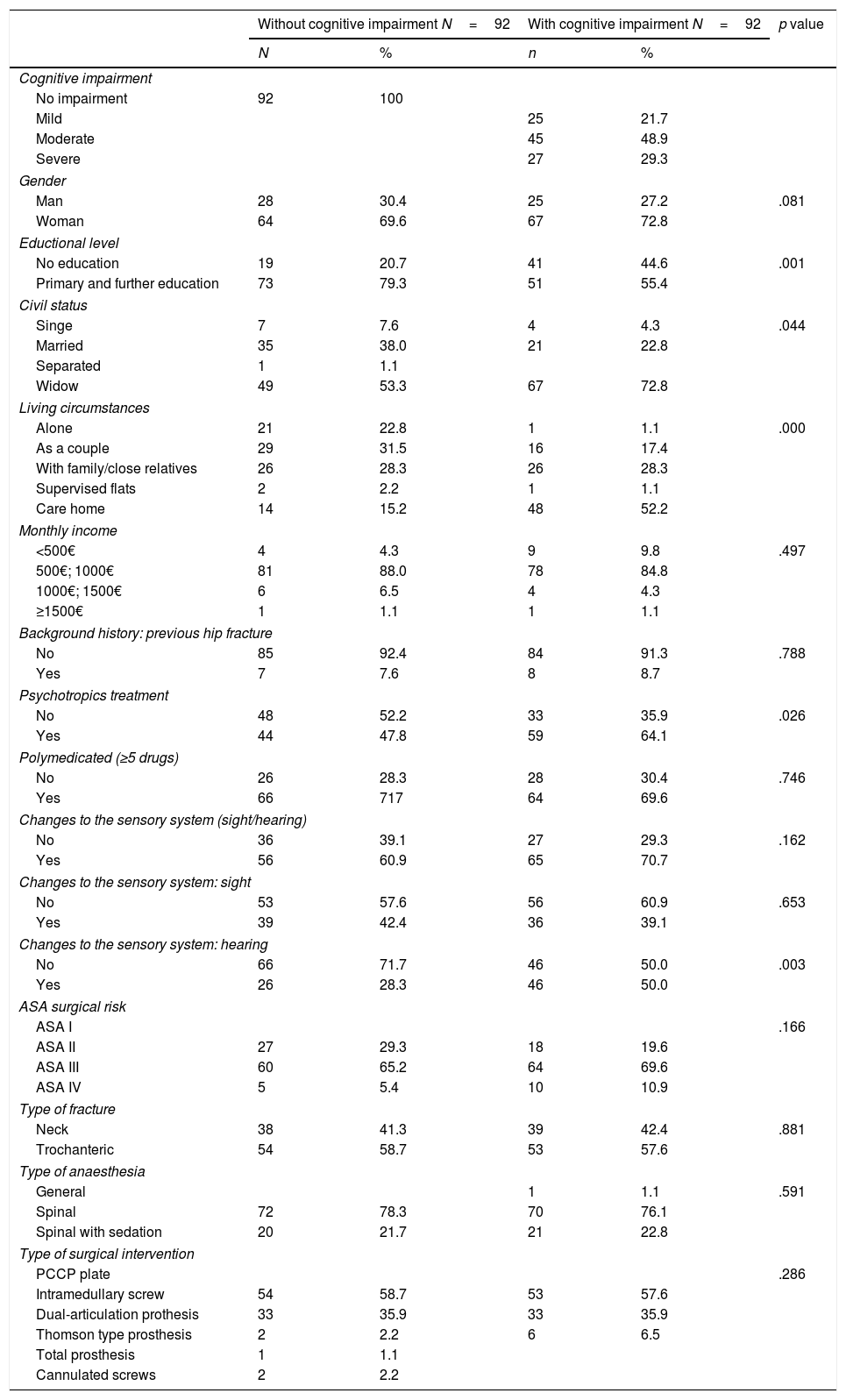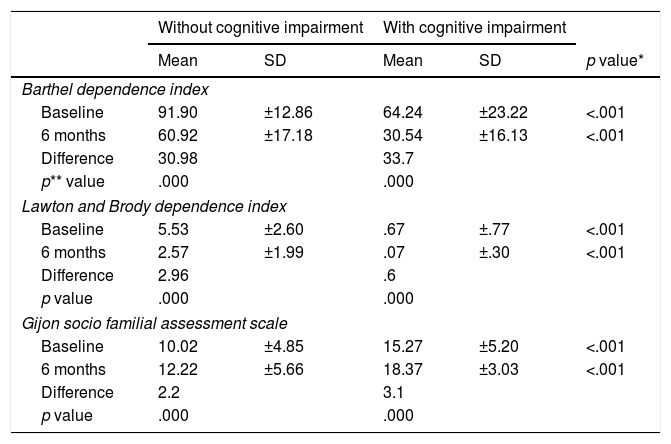To determine whether the baseline cognitive state influences functional recovery 6 months after hip fracture.
To discover the relationship of functional results with comorbidity and cognitive impairment (CI).
MethodsThis was a prospective cohort study, performed in a hospital in the province of Cáceres, which included 184 patients over 65 years of age who underwent hip fracture between November 2016 and October 2017.
We included clinical, sociodemographic, personal history, and functional dependence variables (Barthel Index, Lawton and Brody Scale) on admission and at 6 months.
ResultsOf the total 184 patients, 50% knowingly had CI.
The mean age was 85.48 years (SD: 5.82), 70.9% were women. There were no significant differences in age between the 2 groups (p=.081).
In the pre-post study of each cohort, there were significant differences in all the functional variables studied referring to BADL and IADL at pre-fracture and at 6 months post-fracture (p<.05).
Institutionalization after discharge was 35.3% in the group of patients without CI, compared to 75% of patients with CI.
ConclusionsA significant decrease in BADL and IADL was observed in both groups. The greatest difference occurred in IADL and in patients with CI.
Cognitive impairment prior to fracture seems to be an important predictor of functional and socio-familial outcomes of patients with hip fracture.
Determinar si el estado cognitivo basal influye en la recuperación funcional a los 6 meses de la fractura de cadera.
Conocer la relación de los resultados funcionales en función de la comorbilidad y del deterioro cognitivo (DC).
MétodoEs un estudio de cohortes prospectivo, implementado en hospital provincia de Cáceres, que incluyo a 184 pacientes mayores de 65 años intervenidos de fractura de cadera entre noviembre de 2016 y octubre de 2017.
Se incluyeron datos clínicos, sociodemográficos, antecedentes personales, variables de dependencia funcional (índice de Barthel, Escala de Lawton y Brody) al ingreso y a los 6 meses.
ResultadosDel total de 184 pacientes, intencionadamente el 50% de los pacientes tenían DC.
La media de edad fue 85,48 (DE: 5,82), el 70,9% eran mujeres. No hubo diferencias significativas en las edades entre los 2 grupos (p=0,081).
En los pre-post de cada cohorte, se produjeron diferencias significativas en todas las variables funcionales estudiadas referidas ABVD y AIVD a nivel prefractura y a los 6 meses posfractura (p<0,05).
La institucionalización tras el alta fue del 35,3% en el grupo de pacientes sin DC, frente al 75% de los pacientes con DC.
ConclusionesSe observó una disminución significativa en el desempeño de las ABVD y AIVD en ambos grupos. La mayor diferencia se produce en las AIVD y en los pacientes con DC.
El deterioro cognitivo previo a la fractura parece ser predictor importante de los resultados funcionales y sociofamiliares de los pacientes con fractura de cadera.
Artículo
Diríjase al área privada de socios de la web de la SEDENE, (https://sedene.com/revista-de-sedene/ ) y autentifíquese.
Comprando el artículo el PDF del mismo podrá ser descargado
Precio 19,34 €
Comprar ahora










